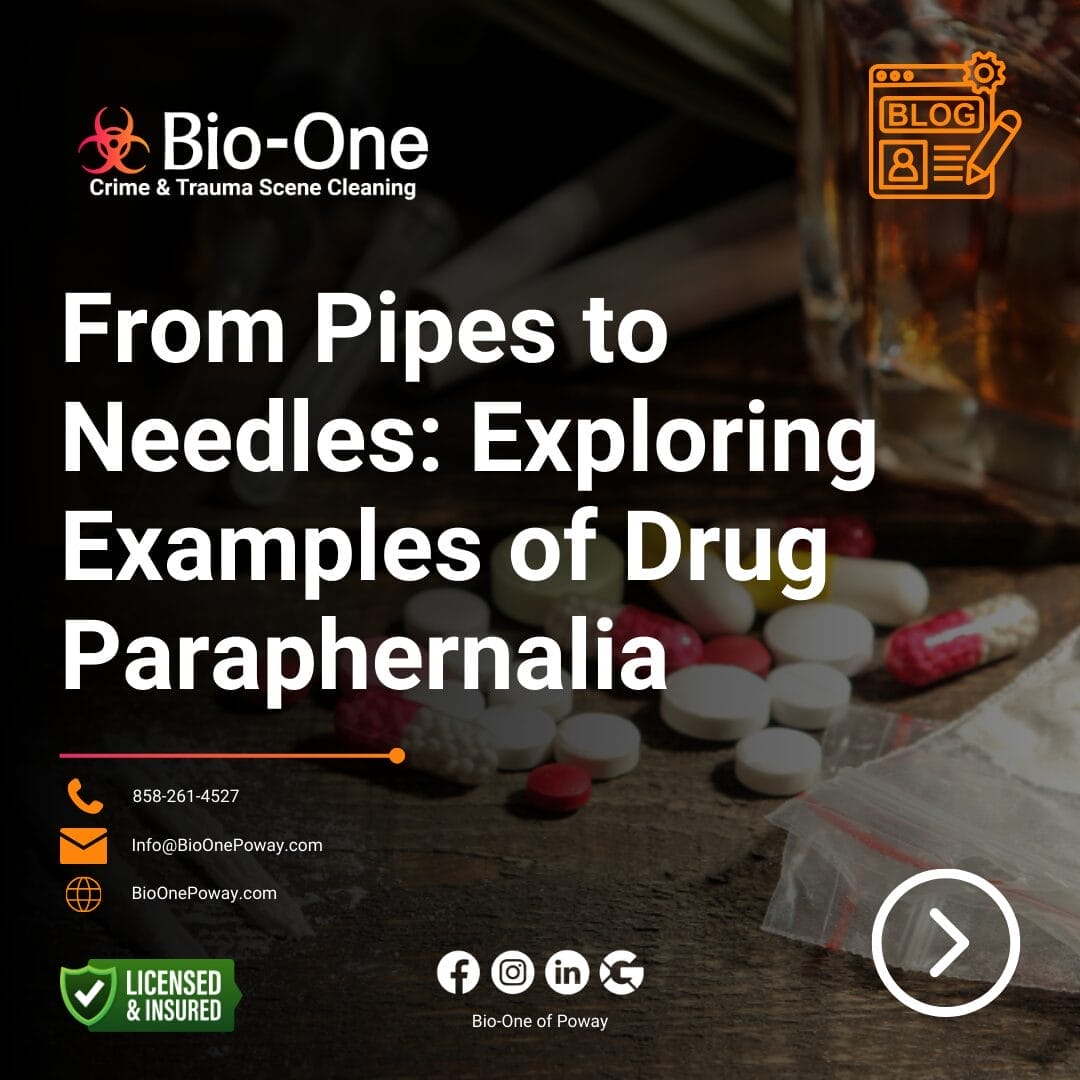
People use drug paraphernalia to consume or prepare drugs. These items come in many forms and can consist of various materials. With drug addiction being a global problem, recognizing drug paraphernalia and understanding the risks associated with it becomes a priority for anyone potentially exposed. In this blog post, we explore different examples of drug paraphernalia, their purpose, and the dangers that come with exposure to them.
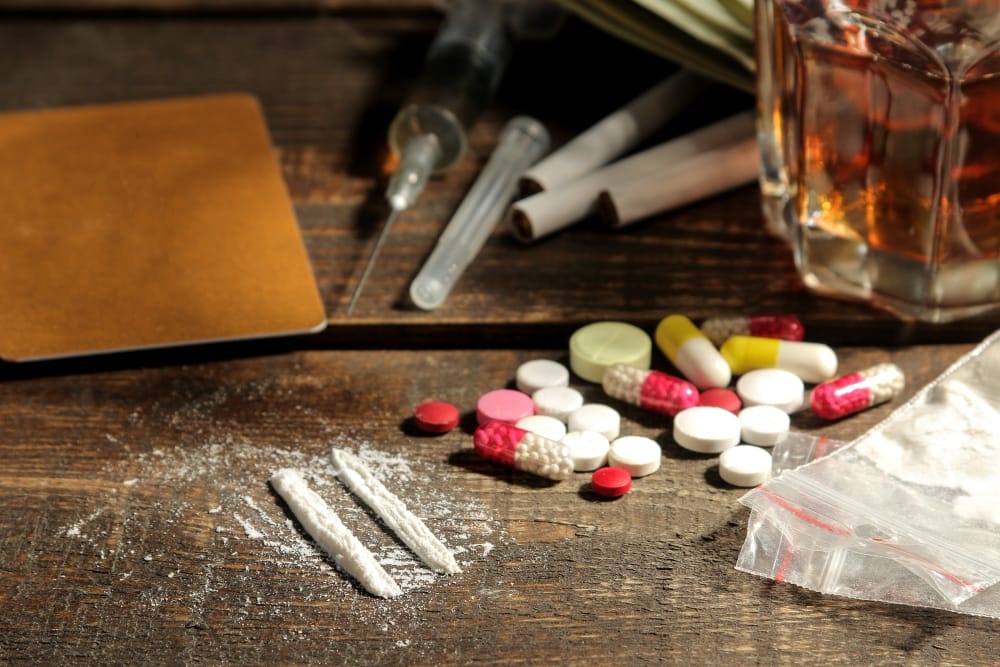
Exposure to drug paraphernalia can pose significant health risks, especially for children and pets. Drug paraphernalia contact can present several dangers:
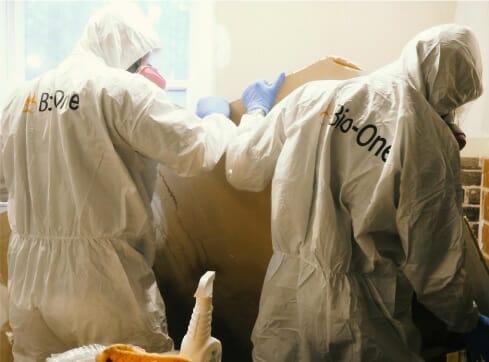
These are just a few examples of drug paraphernalia. These materials come in many forms and can pose a significant risk to individuals who come in contact with them. It is important to recognize these items and take appropriate measures to dispose of them safely. Exposure to drug residue can lead to various health issues, including addiction, respiratory problems, and bloodborne diseases.

Cats are adorable, playful, and loyal creatures that we often consider our family members. We love them! However, when they decide to pee outside their litter box, we know the smell can be disastrous. Whether it's on your furniture, carpets, or other surfaces around your home, the odor of cat pee can be stubborn and difficult to remove. Luckily, there are simple tips for removing cat pee smell from your home. In this post, we’ll share some effective ways to eliminate it and make your home odor-free once again.
The first step in removing cat pee smell from furniture and carpets is to blot the area with a paper towel to remove as much of the urine as possible. Next, mix equal parts of water and white vinegar and spray it on the affected area. Leave it to soak for about 10 minutes before blotting the area again with a clean cloth. Finally, sprinkle baking soda on the area and vacuum it up once it dries.
If your cat has urinated on your bed or other bedroom furniture, you can use an enzymatic cleaner to break down the proteins in the urine. Covering the area with a towel or plastic wrap for several hours or overnight will help the enzymatic cleaner work more effectively. Once the area is dry, vacuum up any leftover residue.

Start by wiping the affected area with a paper towel and then clean it with soap and water. Next, use your mixture of water and white vinegar and spray the affected area with the solution. Leave it to sit for about 30 minutes before wiping it clean with a damp cloth. While you're at it, give your bathroom a thorough cleanup, and make sure you don't let cats enter again!
Over time, your cat’s urine may have soaked into your floors or other surfaces, which can cause odor problems. To get rid of the smell, you can use a commercial enzyme cleaner. Spray it on the affected areas and keep the area well-ventilated to help it dry faster.
Additionally, regularly airing out the rooms where your cat spends time can also help keep the space fresh and prevent any lingering odors. If possible, try to open windows and use fans to circulate air. This will not only help with odor control but also improve overall air quality.

Don't forget to air out their belongings: take out their bedding and wash it regularly to prevent any lingering odors from building up. And lastly, make sure to clean out litter boxes frequently to keep them from emitting unpleasant smells.
Despite your best efforts, there are times when removing cat pee smell from your home can seem impossible. When that happens, it's time to call in a professional odor removal service like Bio-One of Poway. Our technicians have the knowledge, equipment, and expertise to locate the source of the odor and eliminate it!
Removing cat pee smell from your home can be a challenge, but we hope that with these simple tips, you can start eliminating these pesky odors from your home. Remember, cleaning the affected area as soon as possible and using enzymatic cleaners can remove the odor effectively. However, if you have a severe odor problem, don't hesitate to call a professional odor removal service like Bio-One of Poway. With our expertise, you can be sure that your home will smell clean and fresh again.
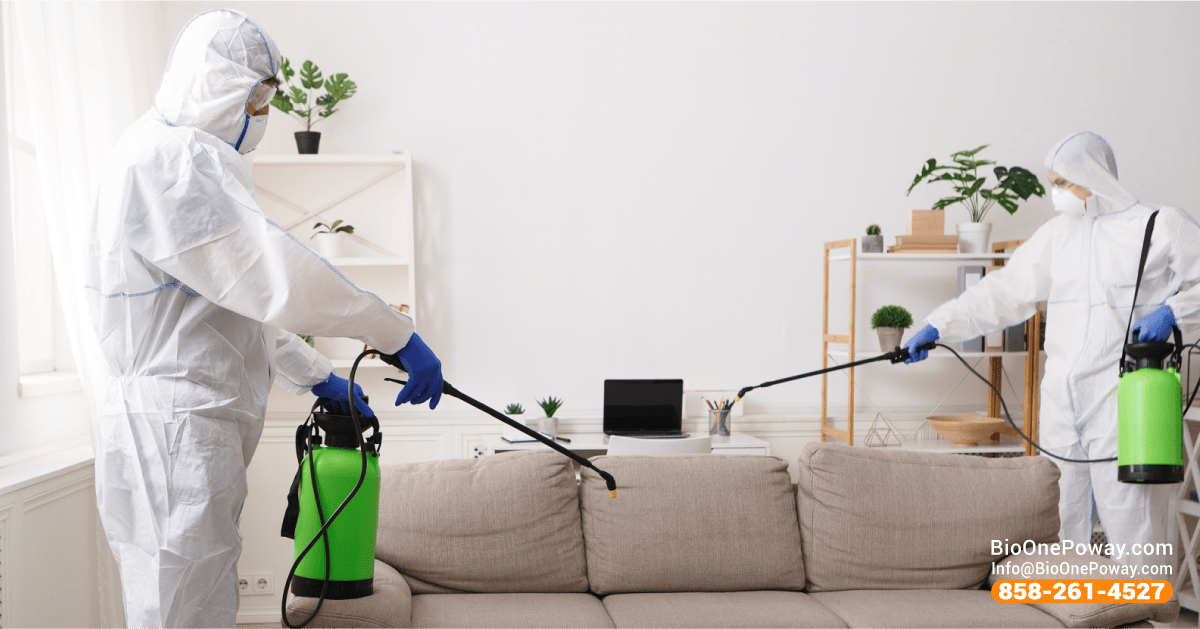
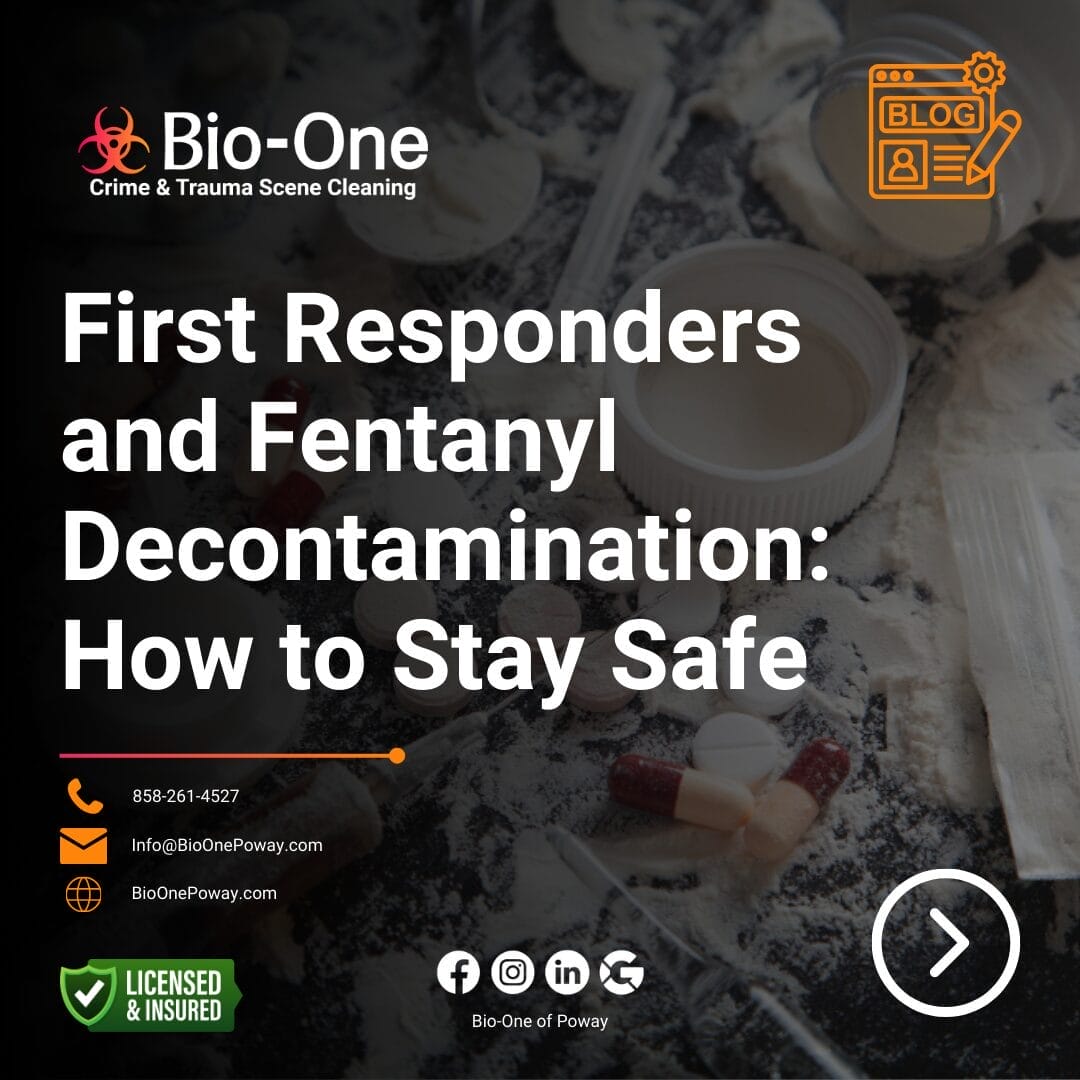
Fentanyl has become an alarming hazard for first responders and other professionals in the emergency and public service sectors. Its potency and potential for accidental exposure pose serious risks to health and safety. This ample guide aims to educate you and equip you with essential information to protect yourself and those you serve.
Disclaimer: It's crucial to recognize that fentanyl is an extremely dangerous substance. Its remediation and handling should only be conducted by professionals trained and equipped to deal with such hazardous materials safely. This guide is meant for educational purposes and to enhance safety protocols; however, direct engagement with fentanyl should always be avoided unless you are a certified professional.
Fentanyl is a powerful synthetic opioid, originally developed as a pain management medication. It’s now infamous for its role in the opioid crisis. Fentanyl is up to 100 times stronger than morphine, and even small amounts can cause severe respiratory distress, leading to possible fatality. Its chemical structure allows it to be absorbed rapidly through the skin and mucous membranes, making accidental exposure a significant concern.
Fentanyl's potency is not its only danger; it's the reason it's marketed as a highly controlled prescription drug. However, illicitly manufactured fentanyl is increasingly common in street drugs, where users and first responders alike may be unaware of its presence. Law enforcement personnel, medical professionals, and drug identification experts are at risk of exposure and overdose when handling or investigating substances that could contain fentanyl.
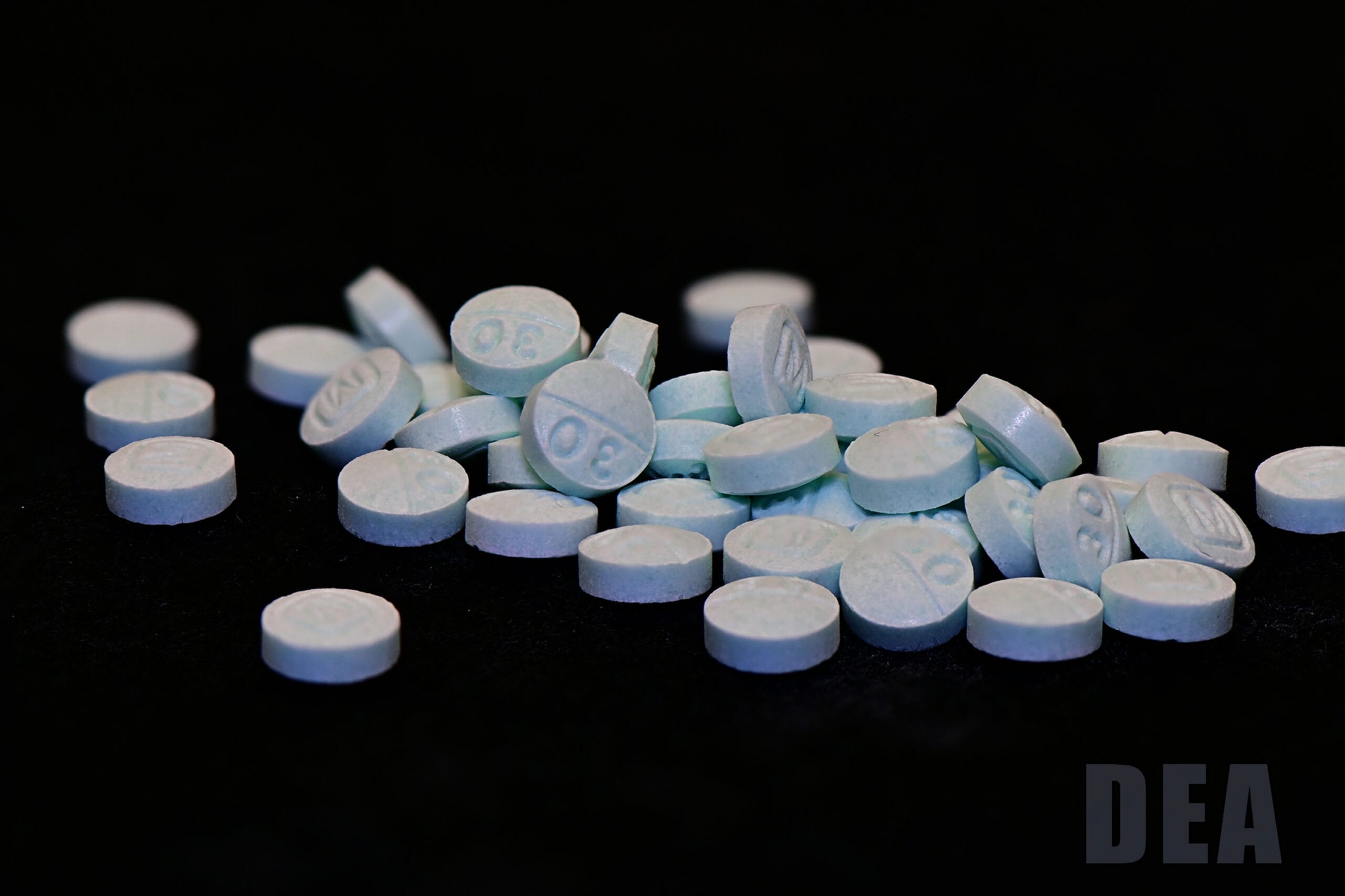
First responders can be exposed to fentanyl through various ways, including:
Regardless of how small these exposures may seem, they carry significant risks. Recognizing the potential for these exposures and taking preventive steps is crucial.
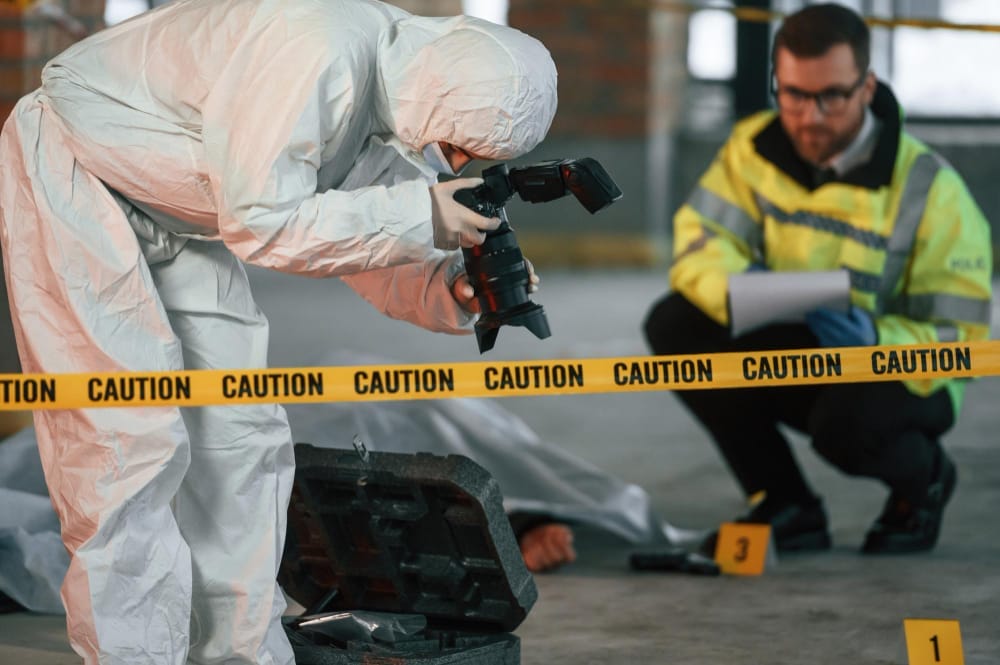
For property managers, as well as homeowners, discovering illicit drug use on your premises is alarming. Not only is there a risk of needle sticks, but also the potential for contaminated drug paraphernalia to be left behind, creating an escalation in the workforce's health risk.
If you suspect fentanyl may be present in a property, the immediate steps to take include:
After taking initial safety precautions, enlisting the help of a professional fentanyl decontamination service, like Bio-One of Poway, is the safest route. Professionals in this field have the necessary experience, tools, and personal protective equipment (PPE) required to safely remediate the area.
The professionals will:
It’s important to understand there might be legal implications for discovering drug residue on your property. Working with a decontamination service that complies with all local, state, and federal regulations will ensure the situation is resolved safely and lawfully!

With a team of qualified technicians using industry-standard protocols, Bio-One of Poway provides fentanyl decontamination solutions with discretion and empathy. Remember, when it comes to fentanyl, professional help is the safest help. Whether you're in the San Diego County area, or any location nationwide, give us a call to receive immediate assistance!
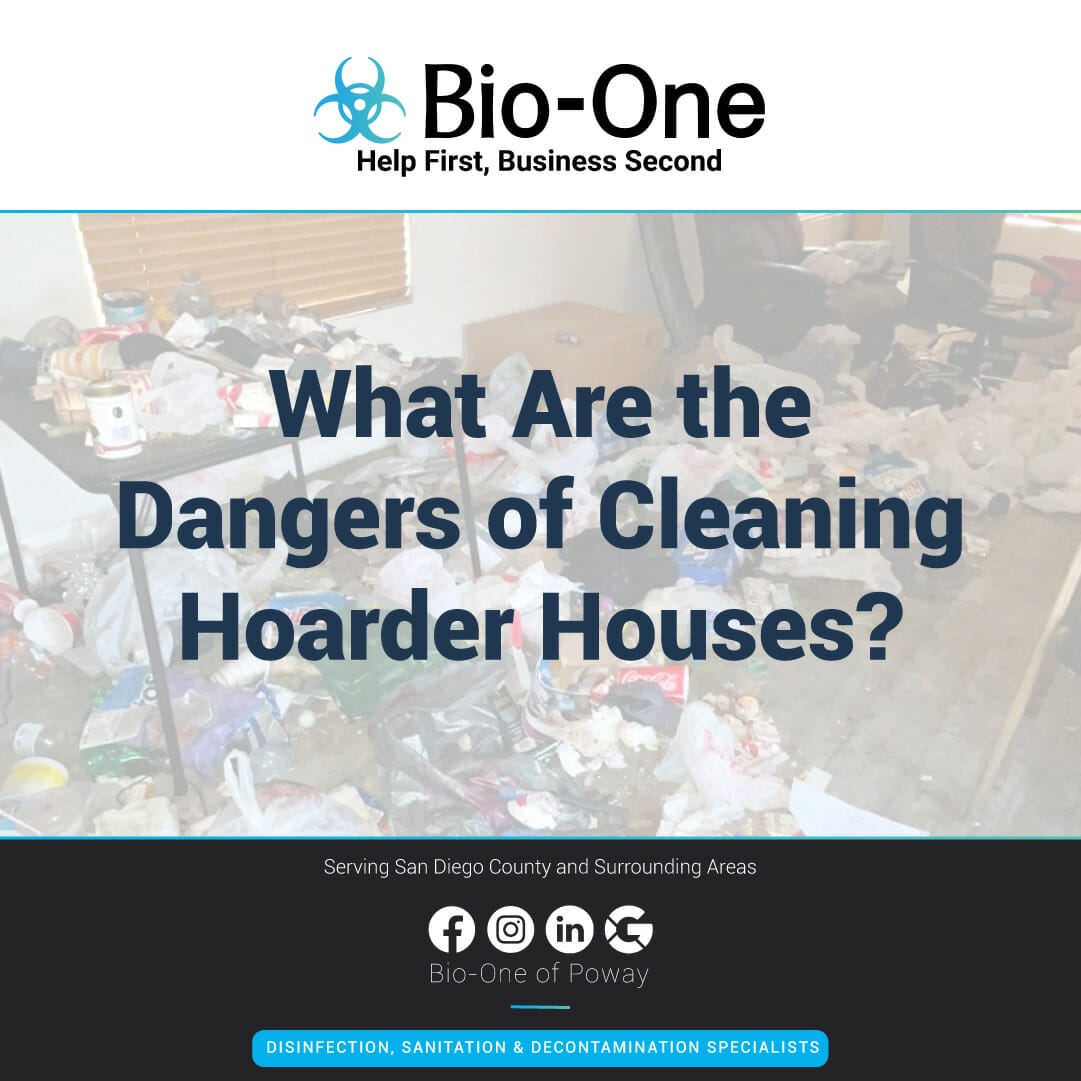
Hoarder houses typically have excessive clutter and debris, making them almost impossible to navigate in. The accumulation of junk, papers, clothes, and other items is a breeding ground for bacteria, dust, and pests that can become health hazards. However, the dangers do not end there. In this blog post, we will reveal the pernicious dangers that lurk in hoarder houses and how remediation technicians at Bio-One can handle these cleanups.
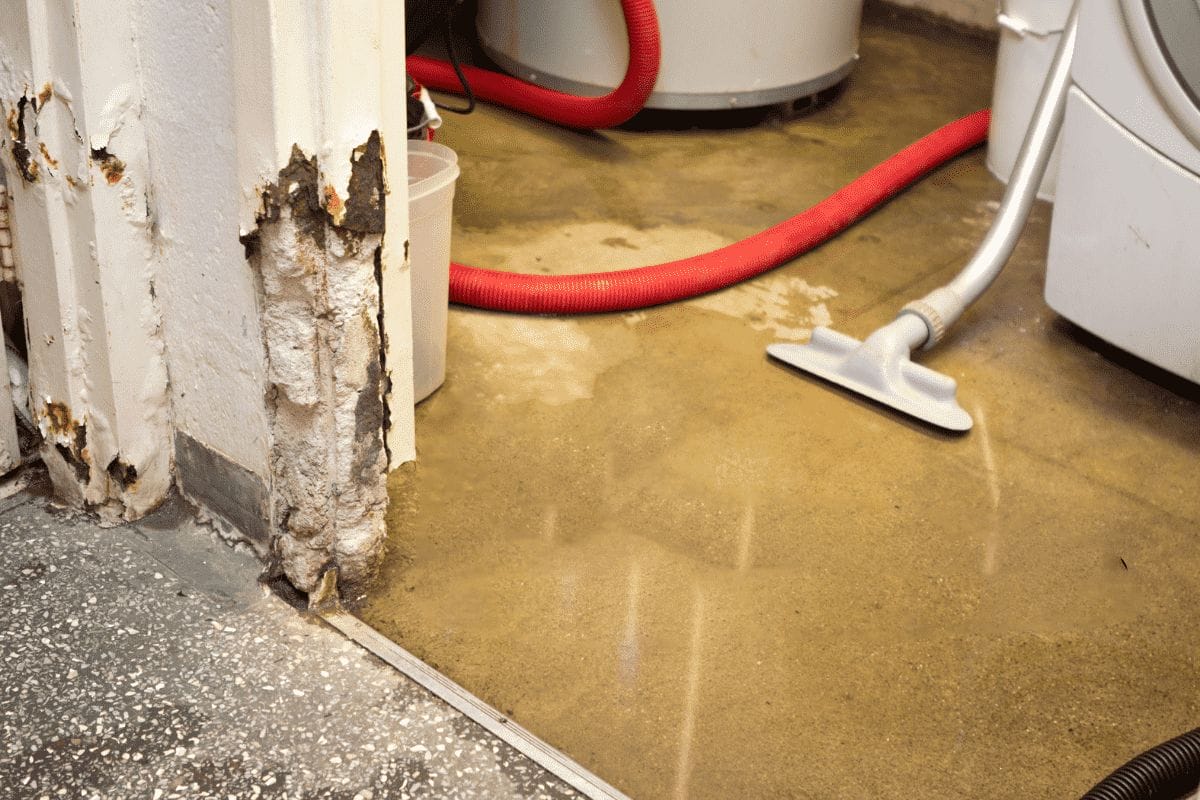
Moisture from incidents such as water damage, pipe leaks, and spills, can go unnoticed in hoarder houses. It provides an ideal environment for mold growth, which may result in respiratory issues. When Bio-One of Poway remediates hoarder houses, we ensure that mold testing and remediation is one of their highest priorities. We are Micro-certified mold remediation inspectors and contractors!
Rodents and other pests thrive and multiply in hoarder houses. They can cause severe damage to the property and pose a threat to the health of those who enter the premises. Rats, mice, cockroaches, and other pests carry diseases and bacteria that can spread throughout the house. At Bio-One of Poway, we have experts trained in cleaning up and removing animal waste to eliminate infestations safely.
The sheer weight of clutter in hoarder houses can cause structural damage over time. Piles of items can place excessive stress on the floors and walls, leading to cracking or collapse. This danger is not only limited to the hoarders themselves but also to any visitors or emergency responders who may enter the house!
Cluttered spaces are at a higher risk of fire hazards. Flammable items, such as paper and chemicals, can quickly catch fire and spread throughout the house. In hoarder houses, these risks are heightened due to blocked exits and narrow pathways that make it difficult for firefighters to enter the premises in case of an emergency.

Electrical hazards are also common in hoarder houses, as electrical outlets may be overloaded with extension cords and overloaded power strips. Additionally, clutter can easily block or cover heating vents, increasing the risk of fire or carbon monoxide poisoning.
Image by partystock on Freepik
The clutter in hoarder houses creates physical hazards for anyone who may enter or try to move around the property. People can trip or fall, and stacks of items like old newspapers or magazines can collapse and cause injury. We are prepared to move and manage bulky items, such as furniture, in order to create a safe and accessible living space.
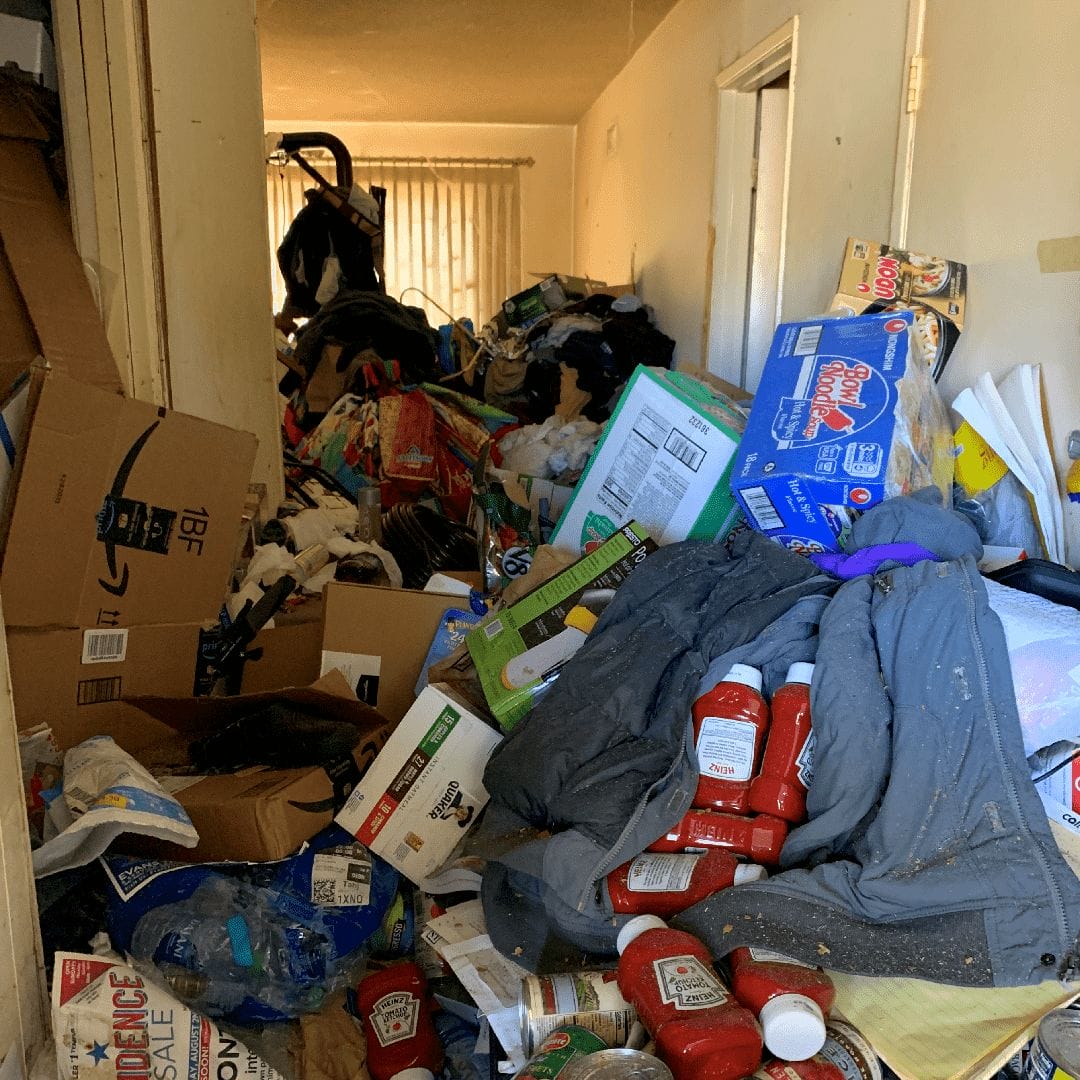
In extreme hoarding situations, animal feces and urine may be present on the property. It can cause serious health issues such as E. Coli and Salmonella infections. Human bodily fluids are also a potential threat and have the potential to carry harmful diseases. We handle disposal with care and ensure the safety of everyone involved.
Hoarding not only poses physical and health hazards but also has a significant emotional weight. Hoarding is often linked to mental health issues, which exacerbates the situation for the hoarder and their loved ones. The process of decluttering and cleaning can be overwhelming and emotional, which is why our team at Bio-One of Poway approaches each case with empathy and understanding.
At Bio-One of Poway, we understand the sensitive nature of hoarding situations and the impact they can have on individuals and families. As a Mental Health First Aid-certified company, we can recognize and support those in need of mental health resources. We approach each case with compassion, respect, and a commitment to helping our community through the hoarding cleanup process.

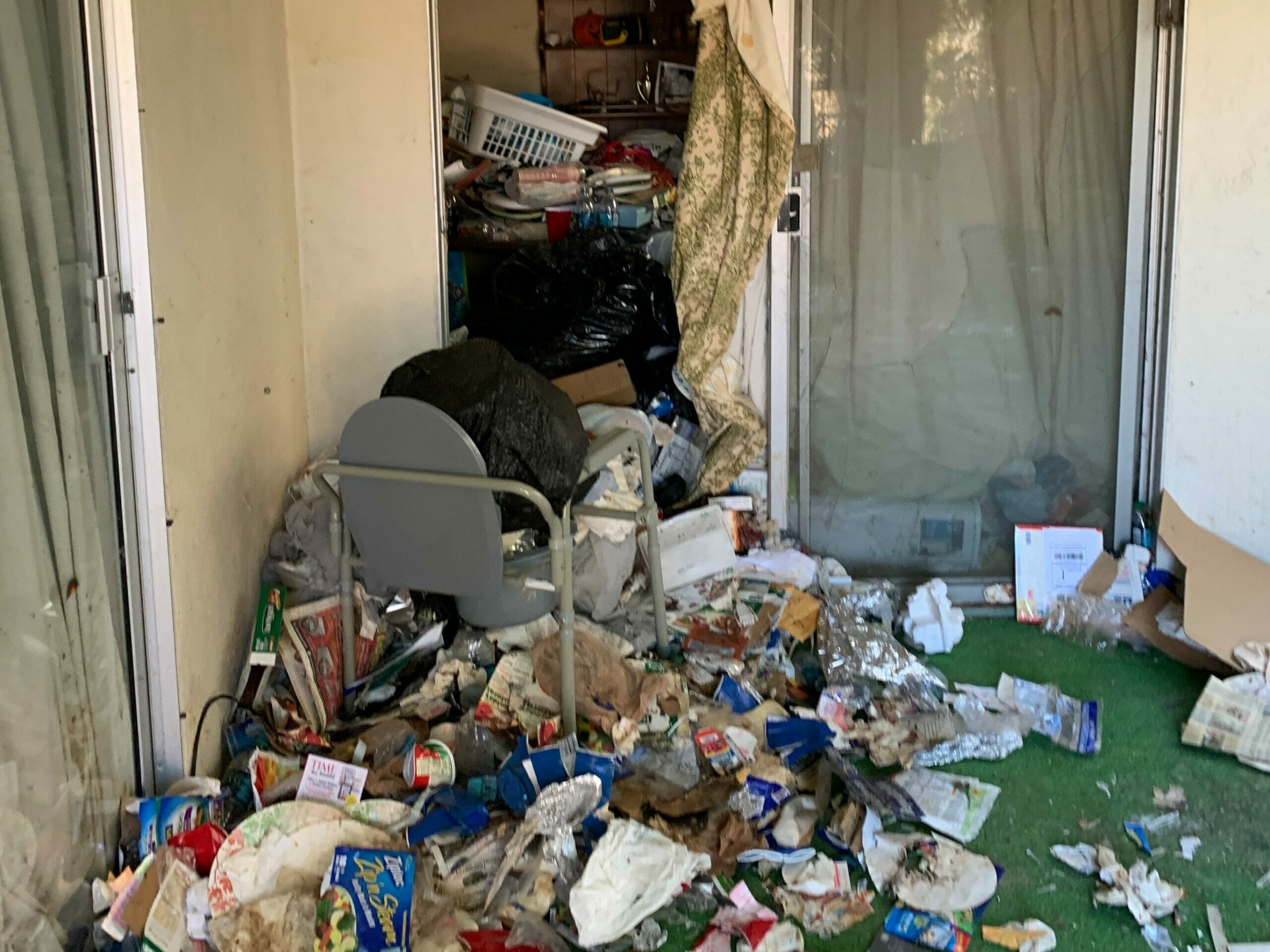
The words “hoarding” and “clutter” are often used interchangeably, but they are not the same thing. Clutter is the accumulation of everyday items that are not organized or put away in their appropriate place. Hoarding, on the other hand, is much more severe and can become a severe psychological disorder. In this blog, we will define the differences between hoarding vs. clutter to help you understand the key distinctions between the two as well as the potential health implications of hoarding disorder.
Clutter might feel overwhelming and disorganized, but the accumulation is generally confined to storage spaces and surfaces. It may be frustrating to clean, but it is not a reflection of underlying psychological health. On the other hand, for those with hoarding disorder, the accumulation of belongings can become dangerously severe to the point where someone’s living conditions become unmanageable.
Hoarding is a potentially serious psychological disorder that typically requires professional intervention. Hoarding disorder is not just a matter of being untidy or messy. It is characterized by several features, including an acquired difficulty to get rid of things, excessive saving and accumulating even if cluttered living conditions have become life-threatening, and frequent dilemmas about getting rid of items. The most common signs of hoarding behavior include:
Clutter is more of a lifestyle issue than an issue with mental health. It means that the accumulation of items is usually manageable, and it typically does not interfere with daily life.

Professional hoarding cleanup services should not be confused with daily house cleaning services or general home organization services. Hoarding cleanup services are provided by licensed professionals who are trained to deal with the complex and intricate issues surrounding hoarding disorder. Hoarding cleanup includes sorting, removing, and disposing of items with compassion and understanding for the individual's needs.
Anyone who may be dealing with hoarding disorder should seek professional help. Hoarding and clutter can have serious health implications, including increased risk of falls, fire hazards, exposure to mold and bacteria, and other infectious hazards. It is vital to understand the difference between hoarding and clutter to seek professional assistance that provides an empathetic approach while ensuring the safety of everyone involved.
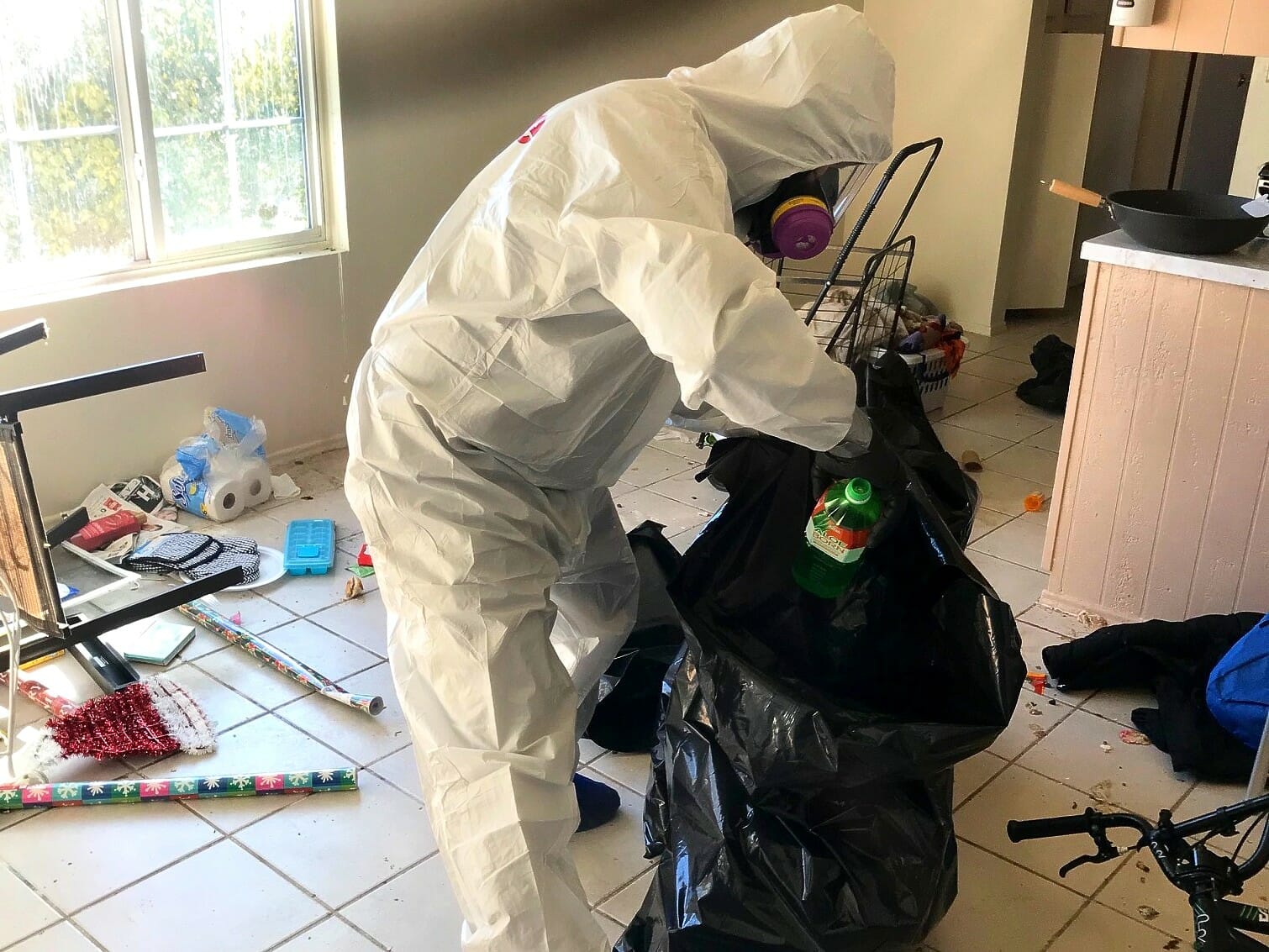
In conclusion, distinguishing between clutter and hoarding is essential in identifying the appropriate support and services you or your loved one might need. Having a cluttered home may be frustrating, but it should not be something that interferes with your daily life. However, when the accumulation of belongings becomes severe to the point of potentially becoming a dangerous living condition, it could be a sign of a hoarding disorder.
Professional hoarding cleanup services and psychological support could be the best solution for those struggling with hoarding disorders. We are available 24/7 to help!
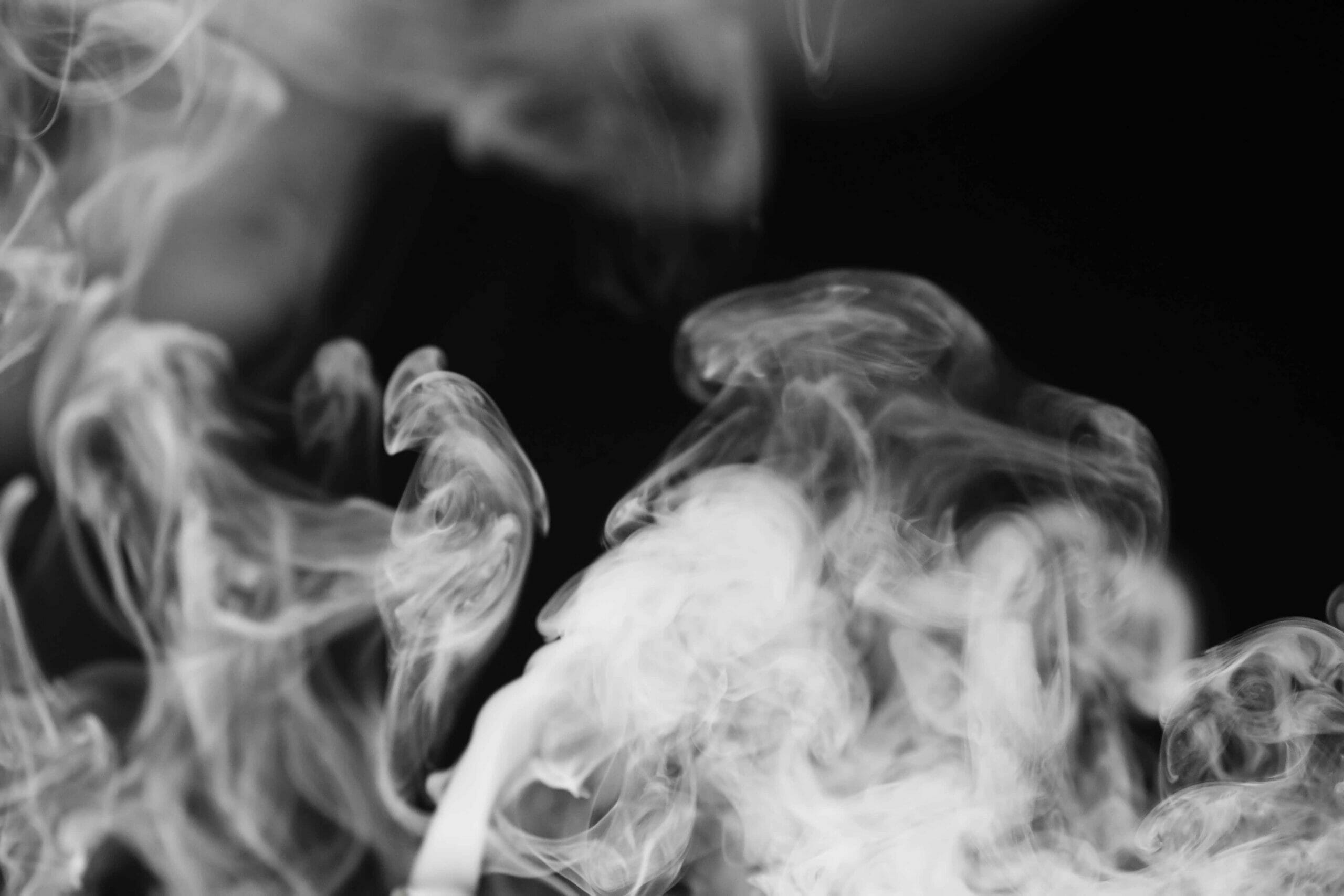
Nicotine stains can be a nightmare to deal with, especially for non-smokers moving into a previously occupied smoking room. The stains can leave lasting odors and unsightly marks on any surface they touch. Even after extensive cleaning, the stains can still persist. In this blog post, we will share tips on how to clean nicotine stains from your home or building and get rid of the lingering odors. With these simple tips, you can ensure that your home or office remains fresh and clean!
Before you begin cleaning nicotine stains, you need to ensure that you have the right cleaning materials. We recommend using vinegar, baking soda, hydrogen peroxide, and bleach. These materials work well in breaking down the nicotine stains and neutralizing any odor. For regular cleaning, a microfiber cloth is ideal as it is gentle on the surface and picks up dirt and grime efficiently. You can also use a good old-fashioned sponge.
Nicotine stains are notorious for leaving marks on windows and glasses. To clean nicotine stains off windows, use a mixture of vinegar and water. Spray the mixture on the window and scrub gently with a soft-bristled brush. Rinse with clean water and dry the window with a clean, soft cloth. You can also use a commercial window cleaning solution to achieve a streak-free finish.
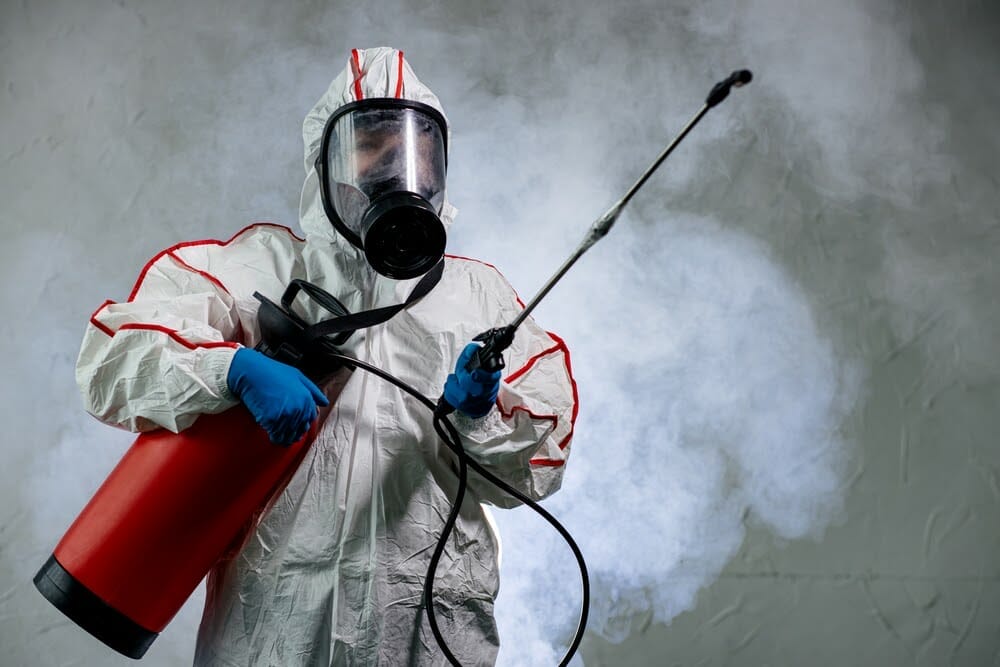
Walls and ceilings are also prone to nicotine stains. To remove nicotine stains from walls and ceilings, mix equal parts of water and vinegar, and use a sponge or microfiber cloth to scrub the surface gently. Alternatively, baking soda mixed with water can also work well. Apply the mixture directly to the surface, and use a sponge to scrub gently. Rinse with clean water and allow the surface to dry. If the nicotine stains are stubborn, you can opt for a commercial cleaner. Be sure to check the manufacturer's instructions before applying!
Nicotine stains can also affect furniture and carpets, making them look old and discolored. Baking soda and vinegar can work well in removing nicotine stains from furniture and carpets. Sprinkle baking soda on the stained areas and leave it for an hour. After an hour, spray the mixture of vinegar and water on the area and scrub gently with a soft-bristled brush. Rinse with clean water and allow the surface to dry. For carpets, pay particular attention to the padding as nicotine odors can linger in the padding.
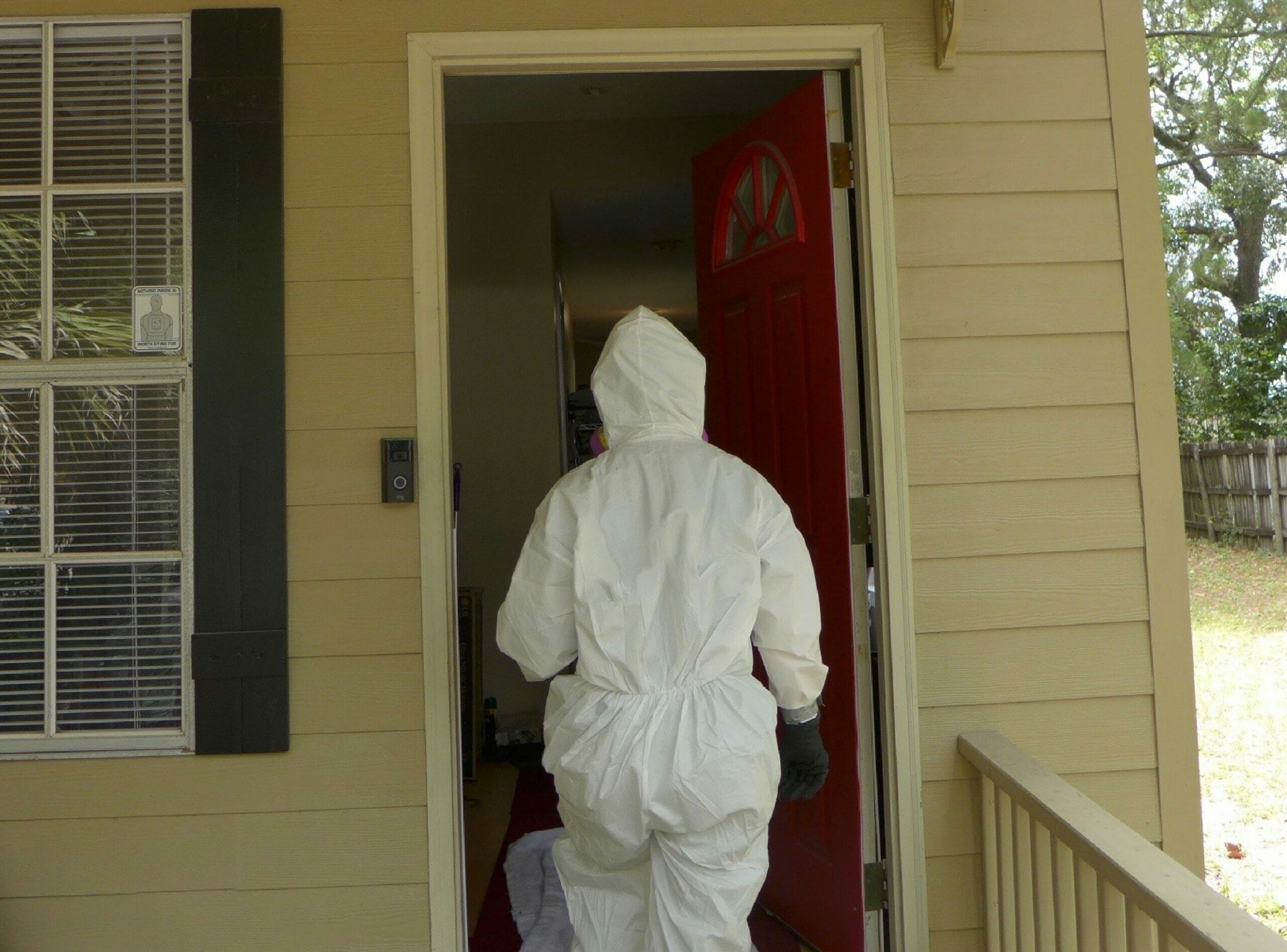
If you’re unable to remove nicotine stains, you can always seek the services of professional cleaners. Nicotine stains and odors can be tough to remove, but with the above tips, you can make your home or building clean and fresh again. Remember to start with the right cleaning materials, clean the windows, deal with walls and ceilings, tackle furniture and carpets, and seek professional help if needed.
At Bio-One, we are available 24/7 to help you. Contact us today for fast and reliable cleaning services!